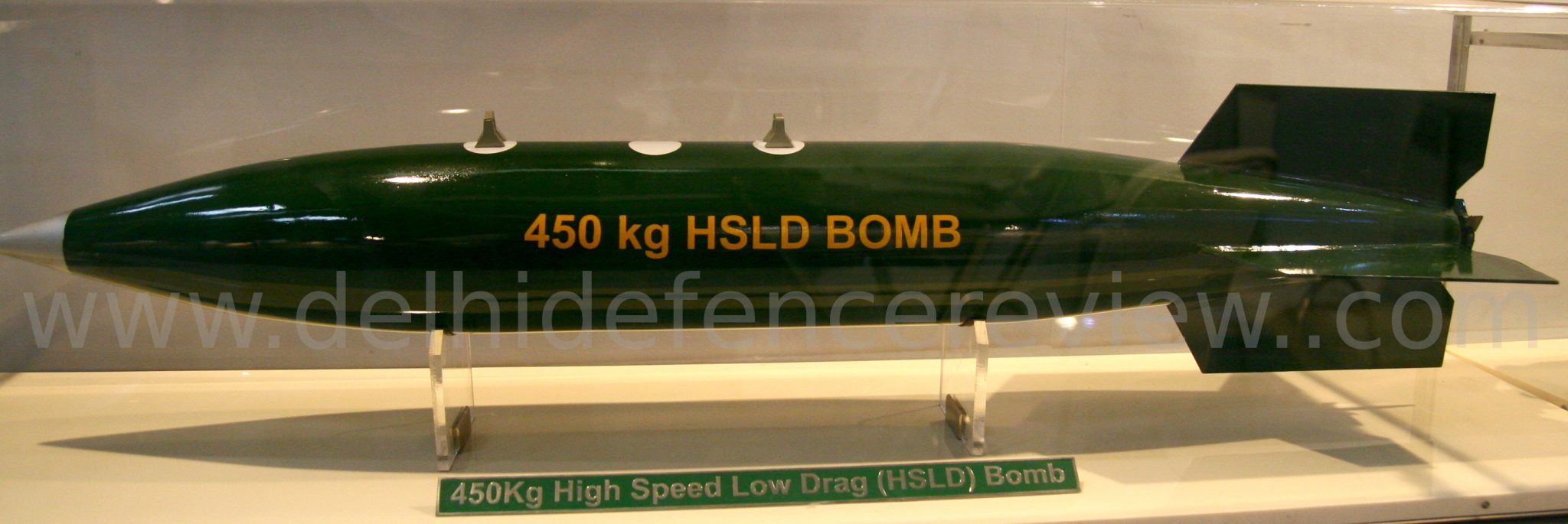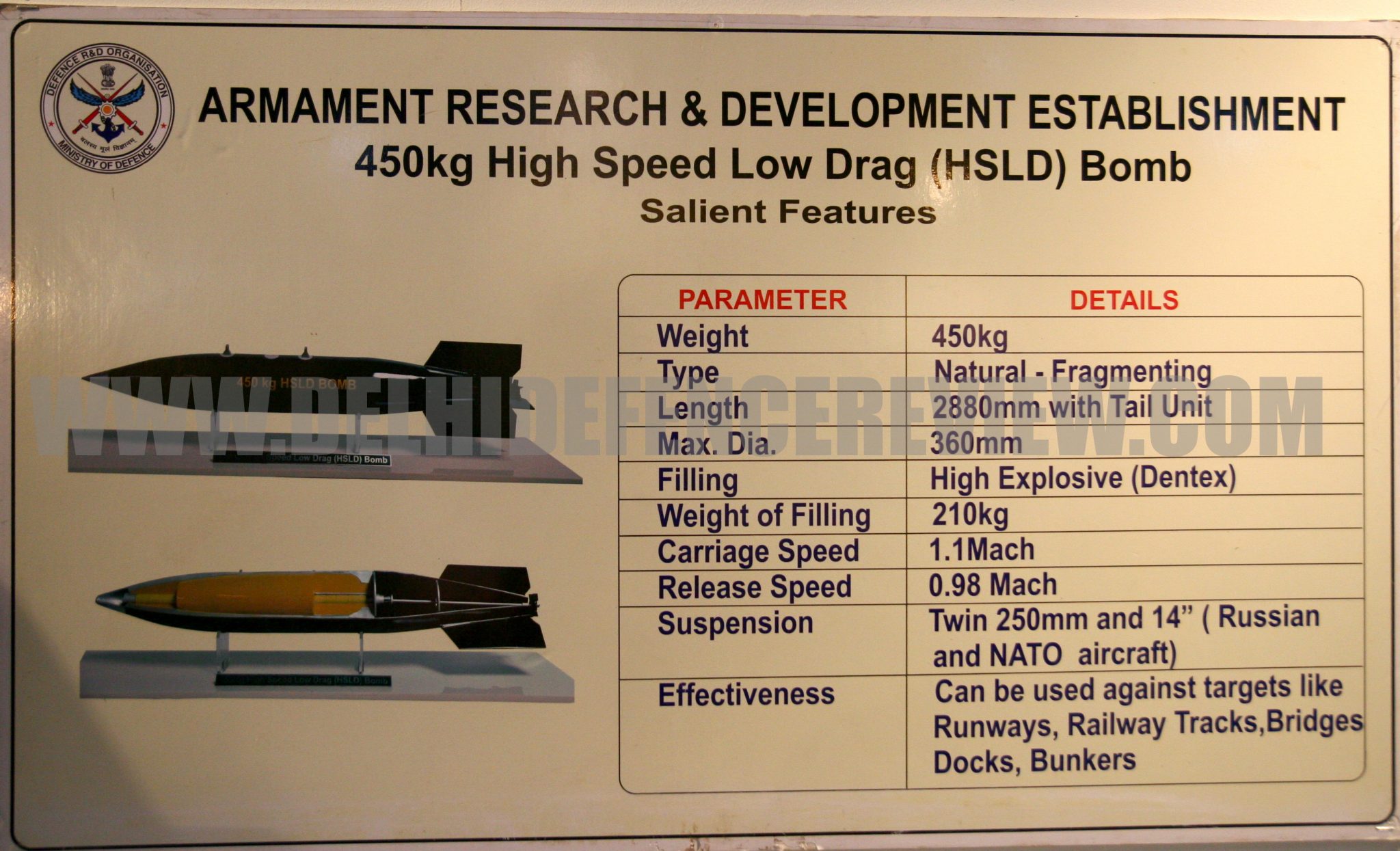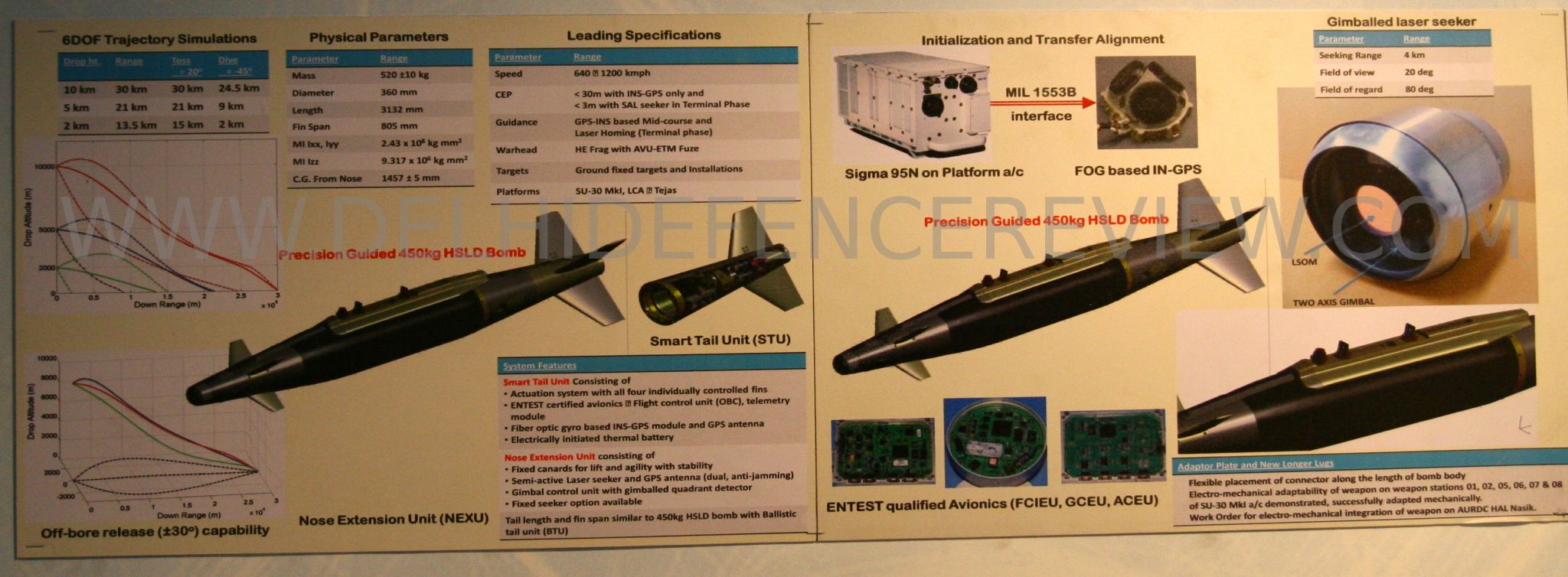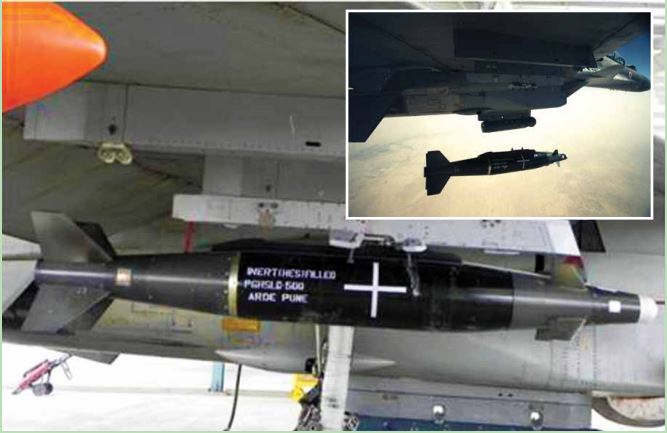Editor’s note: Even as the Indian Air force will soon begin inducting a number of new standoff strike powered munitions from the Defence Research and Development Organization (DRDO) stable, the Armament Research and Development Establishment (ARDE), Pune, DRDO’s premier laboratory for armaments has also been quietly developing new free fall as well precision-guided bombs for more general use by the IAF. These new munitions are expected to be built in numbers to significantly augment the IAF’s ordnance holdings. In this piece, our Photo Editor, Sriram Thiagarajan takes you through some of these new developments.
Legacy conventional bombs in use with the IAF were designed for earlier generations of aircraft. These legacy munitions impose heavy drag penalties on the carrying aircraft which are unable to exploit their otherwise extensive capabilities as a result. Sensing the need to equip the IAF with modern munitions, ARDE embarked on a project to design a new generation of bombs that can exploit the higher carrying speeds and wider flying envelopes of contemporary aircraft in the IAF inventory. These high speed low drag (HSLD) bombs, designed by ARDE,also utilize two types of tail units to cater to different mission profiles – a retarder tail unit (RTU) for low-level bombing missions, and a ballistic tail unit (BTU) for high altitude runs.
450 kg High Speed Low Drag Bomb


A general purpose bomb (GPB) i.e one that is can feature fragmenting, blast and concrete penetration type warheads. It is designed for carriage at up to Mach 1.1 by aircraft of both Russian and Western origin in the IAF’s inventory. This bomb is designed to be used against targets such as runways, bridges, docks, bunkers and railway tracks. It utilizes a high explosiv (HE) Dentex filling as its main charge.
250 kg High Speed Low Drag Bomb

A lighter version of the 450Kg HSLD bomb. Its RTU equipped version has been accepted by the IAF while the BTU version has completed trials and is awaiting intduction.
Precision Guided 450 kg HSLD

The precision guided variant of the general purpose 450Kg HSLD, it is designed for use with a HE fragmention type warhead utilizing an AVU-ETM fuze. Designed to be carried by the the Su-30 MKI and LCA Tejas platforms, this bomb features a nose extension unit (NSE) and a smart tail unit (STU). Fixed canards on the nose provide lift and stability. The unit also houses a semi-active laser seeker and an anti-jamming GPS antenna. The STU comprises four individually controlled fins and houses a flight control unit (FCU) and a telemetry module. A fibre-optic gyro (FOG) based INS-GPS module and a GPS antenna for guidance and electrically initiated thermal battery complete the system. A MIL 1553B interface provides initial alignment guidance to the FOG based GPS to cue the bomb. The on-board two-axis gimballed laser has a range of 4 kilometres (km) with a field of vision (FOV) of 20 degrees. Standoff range for the bomb is an estimated 30 km when released from a height of 10 km and nearly 13.5 km when dropped from an altitude of 2 km. This bomb also has a ±30 degrees off boresight release capability.
500 kg General Purpose Bomb

A general purpose bomb with blast, fragmentation and concrete penetration warheads, it can be utilized to target bridges, runways, railway tracks, bunkers and docks. The main charge of this bomb is a Torpex-4B filling with a RDX booster.This bomb underwent carriage trials on-board a Su-30 MKI earlier this year, with the carrying aircraft touching the bomb’s carriage limits of Mach 0.85 speed at 150 metre altitude. The carrying Su-30 MKI also pulled 6.5 g with a GPB unit, besides full roll manoeuvres. it seems the structural integrity of the bomb was found to be satisfactory after the trials.
Precision Guided 500 kg HSLD Bomb


Designated PGHSLD-500, this is the ‘smart’ version of the 500 Kg GPB. Both its carriage, as well as carriage and release trials (CRTs) were succesfully completed a few months ago. One example with sensors and data loggers for carriage trials and another with GPS and telemetry for CRTs were trialed on Su-30 MKI aircraft from 32 Wing, AF Station, Jodhpur. A release test was performed from an altitude of 5 km, at an airspeed of 900 km/h, with high speed cameras recording the safe weapon separation of the example deployed (See above).
Sriram Thiagarajan is the Photo Editor of Delhi Defence Review.
© Delhi Defence Review. Reproducing this content in full without permission is prohibited.
































